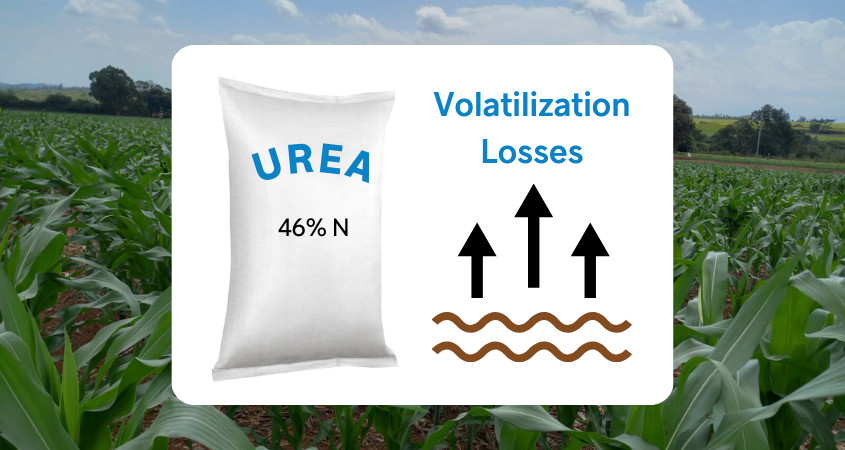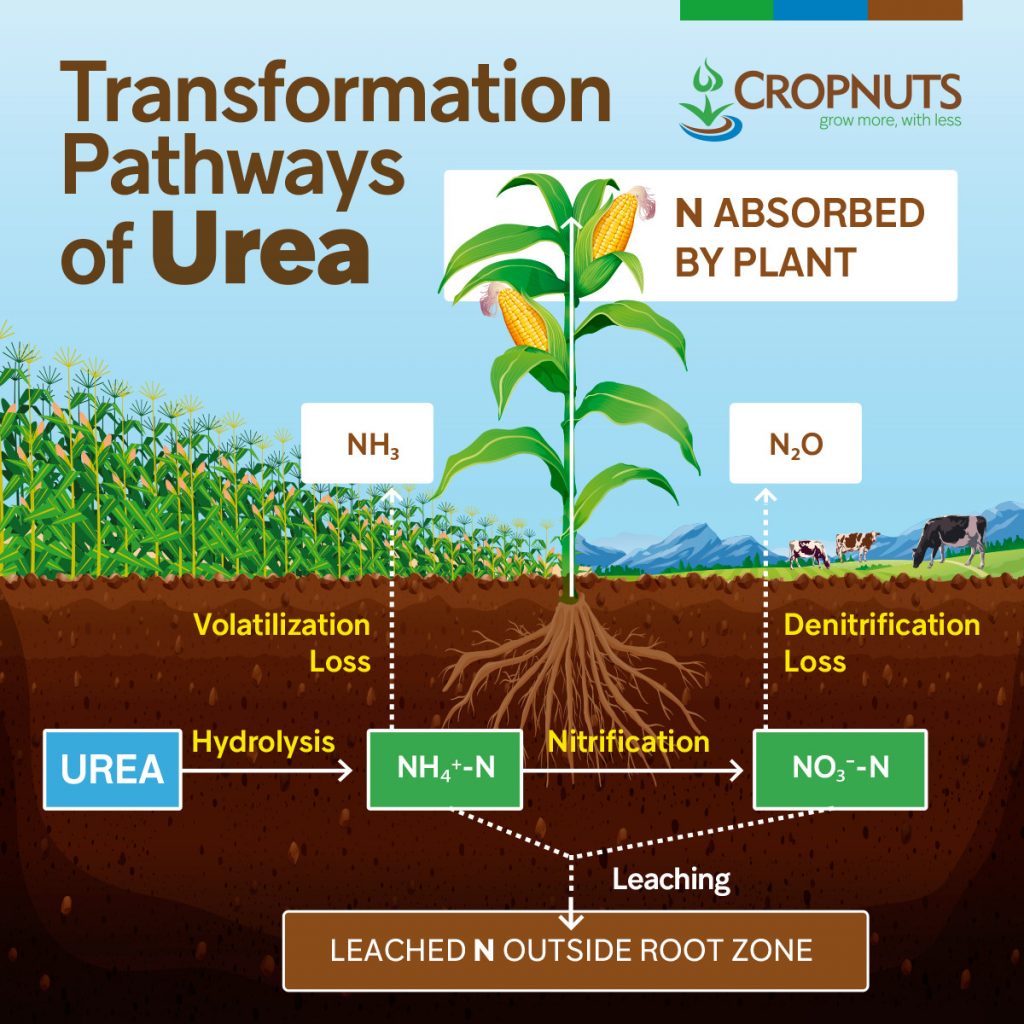
Urea is a commonly used nitrogen top dressing fertilizer, and its effective utilization is pivotal for optimizing crop growth and yield. Urea is, however, prone to volatilization which is the loss of nitrogen to the atmosphere. Nitrogen, when lost through volatilization, not only reduces fertilizer efficiency but can also contribute to air pollution and negatively impact ecosystems. Farmers can employ various strategies to maximize the performance of urea and minimize volatilization losses. Here are key practices to consider:
Instead of applying all the urea at once, consider splitting the application into multiple doses during different growth stages. Smaller, well-timed applications can match the nitrogen demand of the crop, reducing the risk of excess nitrogen being vulnerable to volatilization.
Apply urea when the crop is actively growing and is more capable of taking up nitrogen. Timing applications to coincide with periods of increased nutrient demand by the crop minimizes the risk of nitrogen being lost to volatilization.

Incorporating urea into the soil soon after application helps reduce exposure to urease enzymes on the soil surface. Methods like shallow soil incorporation or irrigation after application can enhance urea incorporation.
Urease inhibitors can be added to urea to slow down the conversion of urea to ammonia. These inhibitors help extend the time urea is available for plant uptake, reducing the potential for volatilization losses.
Controlled-release or slow-release fertilizers provide nitrogen to crops gradually over an extended period. These fertilizers can be effective in minimizing losses by releasing nitrogen more slowly, aligning with the crop’s uptake patterns.
Pay attention to soil moisture levels and adjust urea application accordingly. Adequate soil moisture aids in the incorporation of urea and reduces the risk of volatilization. Manage soil pH to reduce the activity of urease enzymes. In alkaline soils, consider incorporating lime to adjust pH and minimize the risk of volatilization.
Avoid applying urea during hot and dry weather conditions, as these conditions increase the likelihood of volatilization. Applying urea when rainfall is expected or during cooler periods can help mitigate losses.
Regularly assess crop health and adjust fertilization practices based on visual symptoms or leaf tissue analysis. Leaf tests can provide insights into the nutrient status of the crop and guide adjustments in nitrogen applications.
Overall, implementing a combination of these practices can contribute to optimizing urea top dressing performance, ensuring that nitrogen is efficiently utilized by the maize crop while minimizing environmental impact through reduced volatilization losses.
Grow more with less
#sustainability #soilhealth #soilscience
Order our services and get to know how to improve your soil for better yeilds.